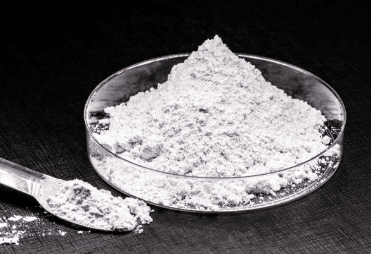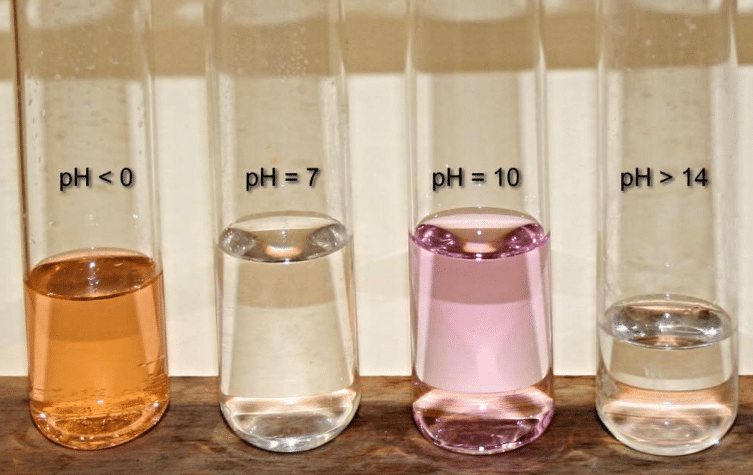The alkalinity of a fish tank, also known as carbonate hardness or KH, is an important parameter that affects water stability, it helps to stabilise the pH level in the tank and prevents drastic changes in water conditions from affecting the fish. Maintaining the correct water chemistry in your fish tank is vital to the health of your fish, and sometimes it may be necessary to adjust the alkalinity in your fish tank appropriately to suit the needs of your fish.
Alkalinity of Fish Tank
What is alkalinity and how does it affect your fish tank?
Alkalinity, also known as carbonate hardness or KH, is the sum of the alkaline substances in water, consisting mainly of carbonate and hydrocarbonate ions. It is a measure of the ability of a body of water to resist changes in pH, i.e. to resist acidification.
In fish tanks, alkalinity plays an extremely critical role. Firstly, it helps to stabilise the pH. The higher the alkalinity of a body of water, the slower the rate of pH change, and therefore better protects fish from sudden pH changes. Second, alkalinity can affect biological processes in the water column, including the nitrogen cycle. In the nitrogen cycle, beneficial bacteria convert ammonia from fish waste to nitrates, a process that requires a moderate alkalinity.
However, either too high or too low an alkalinity may adversely affect fish. Too high an alkalinity may result in an elevated pH, which can stress fish and cause fish disease. Too low an alkalinity may result in wide fluctuations in pH, again stressing the fish. Therefore, properly adjusting and monitoring the alkalinity of your fish tank is essential to maintaining a healthy ecosystem.

Alkalinity and PH in The Fish Tank
Alkalinity is not the same as pH, although they are related. pH measures the acidity or alkalinity (acidic or basic) of water, while alkalinity or total alkalinity measures the buffering capacity of water and its ability to neutralise acids. In short, alkalinity and basicity refer to different things. When talking about alkalinity or the buffering capacity of water, it is also referred to as KH or carbonate hardness, which is also different from GH or general hardness. Carbonate hardness is the amount of carbonates and bicarbonates in water, measured in ppm (parts per million) or dKH (carbonate hardness). pH, which is measured on a scale of 0-14, where 0 means acidic, 7 means neutral, and 14 means alkaline (basic). pH values higher than 7 are considered alkaline. Each time you increase the value, the pH value is multiplied by 10, so a pH value of 9 is 10 times more alkaline than 8.

What should be the alkalinity of a fish tank?
As a point of reference, it is often recommended to keep the alkalinity of a fish tank in the range of 4-8 degrees dKH (German Alkalinity). This range provides a stable pH and supports biological processes in the aquarium, such as the nitrogen cycle.
Fish Species And Areas And Their Need for Alkalinity in Water
- Tropical Fish: Tropical fish generally prefer water with higher alkalinity, usually in the range of 7-12 dKH. this includes hardheads, parrotfish, swordtails, etc.
- Fishes of the Amazon River Basin: These fishes (e.g. Amazon perch, shiners) generally prefer lower alkalinity, usually in the range of 3-8 dKH.
- Fish from the Great Lakes region of Africa: these include African wheat bream, nilotic fish, etc., which generally prefer higher alkalinity, usually around 10-20 dKH.
- Asian fishes: including goldfish and zebrafish, which are more alkalinity adapted, usually in the range of 6-16 dKH.
- North American fish: including niggerfish, rainbowfish, etc., which may have lower alkalinity needs, around 3-10 dKH.
Alkalinity requirements may vary for each fish species, and specific needs need to be adjusted according to factors such as fish species, environment and culture conditions.
Fish Tank Alkalinity Change Factors and Treatment Methods
Factors that Reduce Alkalinity in Fish Tanks
- Excessive fish food
- Accumulation of organic waste
- Increase of carbon dioxide in the water
- Microorganisms in the fish tank
- Improper management of fish tank water quality
- Problems with the water source used
How to lower alkalinity in fish tank?
- Water test: Test the alkalinity of your aquarium regularly.
- Replacement of water source: The water source itself has high alkalinity, you may consider replacing the water source, such as using mineral water or distilled water.
- Adding acidic substances: Adding a small amount of acidic substances such as sodium nitrate or acetic acid to the aquarium can reduce the alkalinity level.
- Use specialised water treatments: there are some water treatments available in the market that are specially designed to adjust the alkalinity of the fish tank, which can be used according to the need and instructions.
- Adding Algae: Adding certain algae and aquatic plants can help increase the alkalinity of the water. Plants and algae absorb carbon dioxide from the water during photosynthesis, and carbon dioxide is one of the main elements that can reduce water alkalinity. For example, pearl grass, water demoiselle, water spinach, etc. are plants commonly used in aquariums to regulate water quality.
Factors that Increase Alkalinity in Fish Tank
- Hard water
- Overfeeding
- Misuse of chemicals
- Excessive decorations
- Too much light
How to increase the alkalinity of fish tank?
- Partial replacement with soft water: You can use soft water (e.g. distilled or reverse osmosis) to partially replace the water in your aquarium.
- Adding acids: For example, using commercial pH adjusters, or natural acids such as vinegar or lemon juice, these need to be used with great caution as overuse may cause the pH to drop too quickly and harm the fish.
- Check decorations: Remove decorations that may increase water alkalinity, such as shells, coral sand, etc.
- Change feeding practices: Avoid overfeeding to reduce alkalinity from waste and feed residue.
Adjusting the alkalinity of the water requires a combination of factors and long-term maintenance and monitoring to avoid excessive changes in water quality to ensure the health of the fish.
Fish Tank Water Quality Parameters
| Water Quality Parameters | Range of Values |
| PH | 6.0 – 8.0 |
| Alkalinity (KH) | 4-8 dkH |
| Hardness (GH) | 3-12 dGH |
| Temperature | 20-28°C (depending on species) |
| Dissolved oxygen | 5-9 mg/L |
| Ammonia (NH3) | 0 mg/L |
| Nitrate (NO3) | < 50 mg/L |
| Nitrate (NO2) | 0 mg/L |
| Phosphate (PO4) | < 1.0 mg/L |
| Salinity (ppt) | 30 – 35 ppt |
How to monitor fish tank alkalinity and other water qualities?
- pH meter: used to measure the acidity or alkalinity of the water, which is critical to the survival of fish. Some pH meters can measure temperature at the same time, as changes in temperature can affect pH readings.
- Dissolved Oxygen Meter: used to measure the level of dissolved oxygen in the water. Fish and other aquatic organisms need enough oxygen to survive.
- Hardness Test Kit: Used to measure the total hardness and alkalinity of water. Hardness is the concentration of calcium and magnesium in the water and has implications for fish growth and reproduction.
- Ammonia and Nitrate Meter: Used to measure ammonia and nitrate levels in water.These substances are products of fish metabolism and high concentrations may be harmful to fish.
- Conductivity Meter: Measures the conductivity of the water, indirect measurement of the concentration of ions in water, generally used in saltwater aquariums.
- Salinity meter: Use a specialised salinometer. For saltwater fish tanks, this parameter is very important.
- Algae monitoring: Use a fluorescence spectrometer (ptsa) to measure the concentration of chlorophyll a in the water to indirectly determine the amount of algae.
Regardless of the method, the best way to maintain fish tank water quality is still to change the water regularly (usually 10-25% of the total tank volume per week) and to keep equipment such as filters clean. Regularly measuring water quality parameters and making the necessary adjustments to ensure consistent water quality is key to maintaining the health of your fish tank.
How to maintain fish tank to produce water quality changes?
- Change water regularly
- Avoid overfeeding
- Keep the fish tank clean
- Proper fish density
- Test the water quality regularly
- Use a good filtration system
- Provide proper lighting
- Add biological filter media
Summary
Reasonably reducing the alkalinity of the tank can maintain the water balance of the tank and ensure the health of the fish, while monitoring the water quality of the tank is also a way to maintain the tank. With over 16 years of instrumentation experience, Apure has developed into a leading instrumentation manufacturer in China. We are able to provide instruments for water quality analysis, flow meter, level measurement, pressure measurement, ozone generator and so on. If you are interested, please feel free to contact Apure’s professional team.
